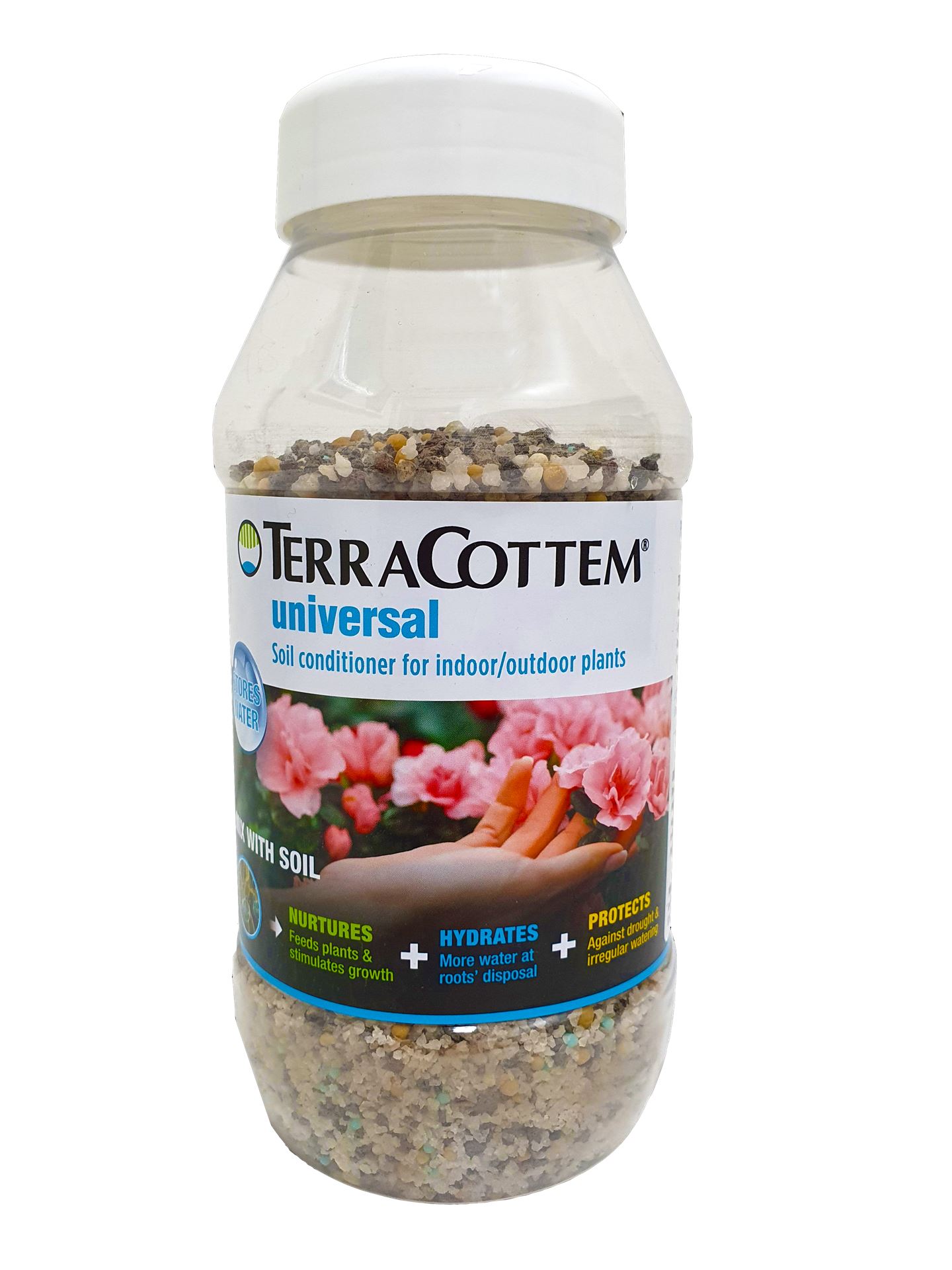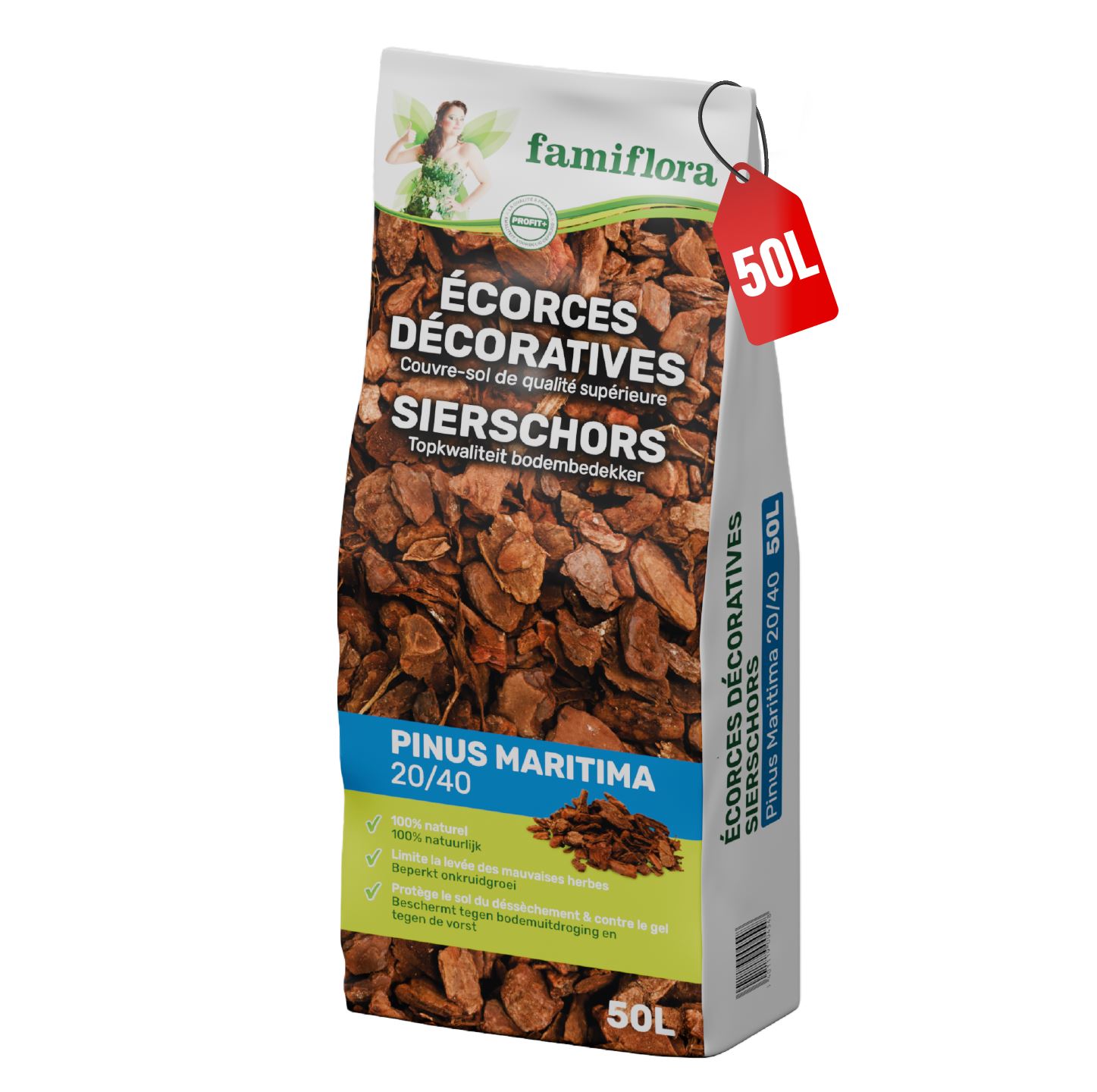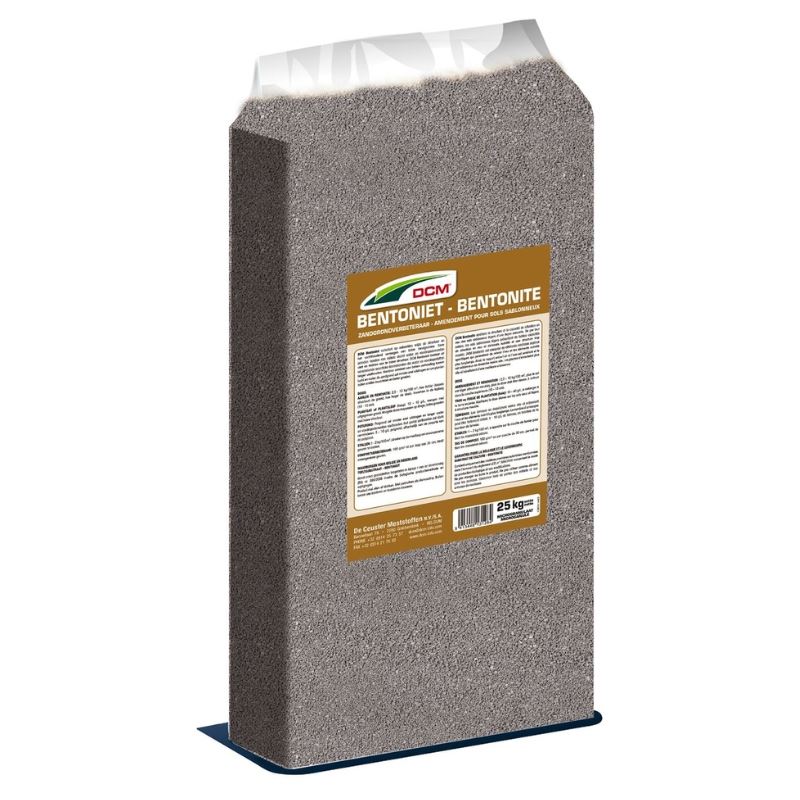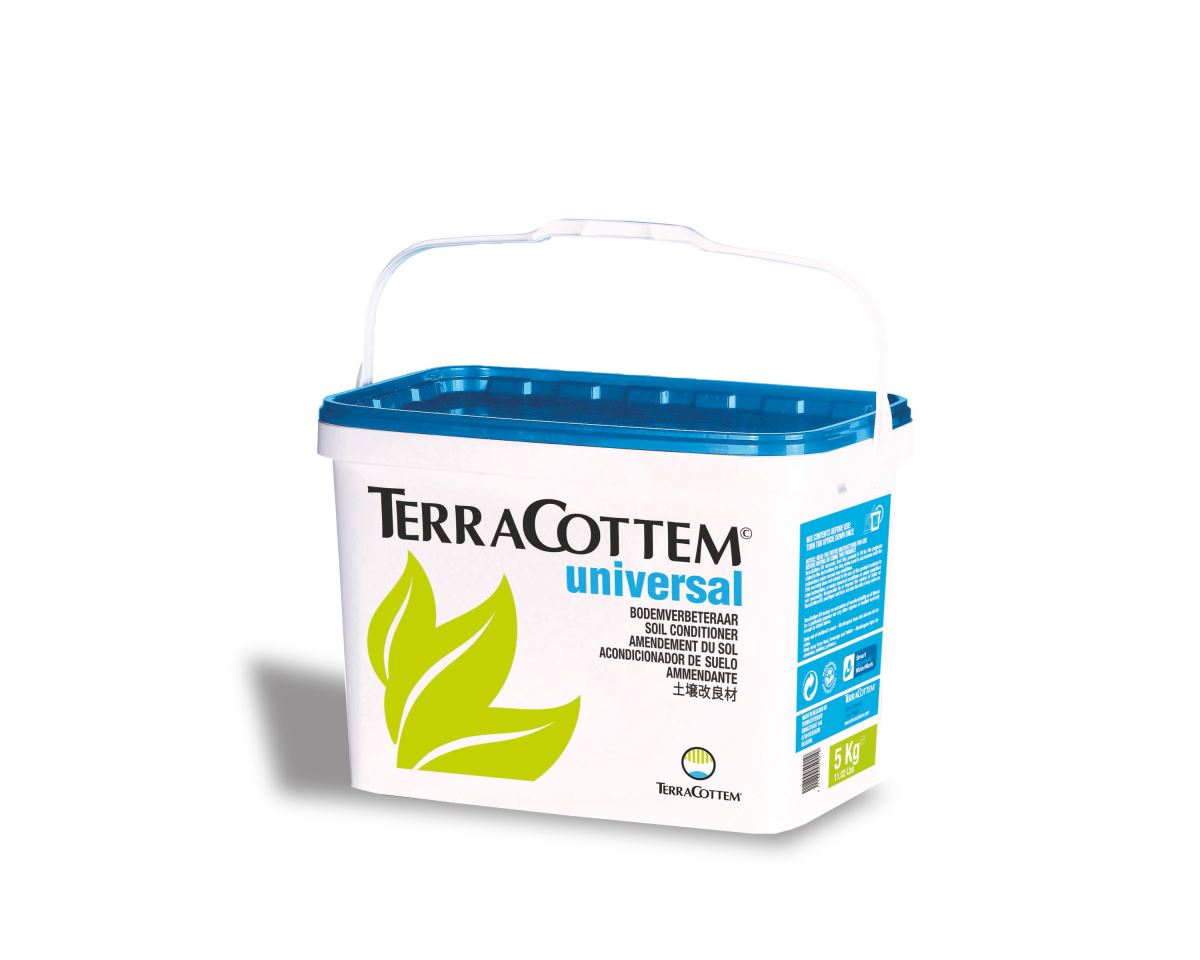
Autumn: the ideal time for planting!
The autumn is the perfect time to tackle your garden & carry out planting work. In this article, we tell you about the advantages of planting in the autumn, how to create a good basis for planting, help you choose plants & give you some handy tips to make your garden drought-proof. And that is certainly not unimportant after yet another hot & dry summer...
The 4 strengths of planting in autumn
When autumn arrives, the temperature drops and the trees lose their lush leaves, there doesn't seem to be much point in planting. Nothing could be further from the truth, because your plants will just gain strength during the autumn months. So it's time for your garden to go dormant, but for you it's time to take that shovel in hand! We list the 4 advantages of planting in the autumn!
• Warm soil
The aftereffects of the summer provide for a
rather warm soil in the autumn.
warm soil. The plants root themselves slowly but steadily in the ground. By planting them in the autumn, they get enough time to prepare themselves for the approaching cold (winter) months. When King Winter arrives, this process comes to a halt until the soil warms up again in the spring. Moreover, plants planted in autumn have a
growth head start, and develop a stronger & larger root system than plants planted in spring.
You will also reap the rewards of this in the summer because
autumn plants grow much faster and are more resistant to drought.
• Enjoy the garden earlier
This immediately brings us to the next advantage: will you be working in the autumn? Then you can
enjoy a beautifully planted garden sooner in spring. And that is what we do it for, right?
• Less drought
During the average Belgian autumn, it can rain quite a lot. Because of this, the chance of (extreme) dryness is almost non-existent in autumn. So, you do not have to fear that your plants' thirst will not be quenched & you have to be constantly busy with the sprinkler. This is different in spring, because the last autumn is often followed by a very dry summer...
Create a drought-proof garden yourself!
• Time for gardening
In spring, many hobby gardeners are
busy in the vegetable garden. There the work piles up again (drawing up a vegetable garden plan, preparing the greenhouse for planting, sowing...) In autumn, however, the list of gardening chores gets smaller & you have fewer (green) hands to do. So you can take the time to give your garden a metamorphosis!
Conclusion 👇
Are there only advantages to planting in the autumn? No, there is one great danger: Autumn and winter are unpredictable. Severe frost nights can cause damage to the roots, and the plant may even freeze. This is especially true for plants that go into the ground bare-root, after which the temperature quickly drops below freezing. So keep a close eye on the weather forecast and protect the plants from the cold. You can do this by protecting them with a winter cover, a black ground cloth or an extra layer of compost. However, this disadvantage does not outweigh the many advantages! Plant in the autumn and the garden will thank you!
Soil improvers get the best out of your soil!
Before you give your green newcomers a place in your garden, you should first prepare the soil for planting. Thanks to soil improvers, you can give a difficult soil a helping hand and get the best out of your plants. You can buy the most expensive plants, but without a good soil, they will not flourish. When choosing the right soil improver, it is important to know the condition of your soil and what it needs. This can be done by a soil test & pH measurement.
Our handy measuring tools 👇
• Dry sandy soil
Use bentonite to weigh down your soil. This is a natural clay material that will retain the moisture in the soil better. As a result, you will not only have to water less, but the added fertilisers will also be better absorbed into the soil!
• Heavy clay soil
Too much is never good & that is also true in the gardening world. Soil that is too dry is bad for your garden, but heavy clay soil does not do your plants any good either. Thanks to perlite, you can lighten such heavy soils. Does ""perlite"" mean nothing to you? Then you probably know it as the white balls in the better potting soils. It is a volcanic rock & therefore 100% natural. That makes us green 💚 naturally happy!
Also lava dust can also help with a heavy clay soil. This soil improver is slowly broken down and released, and will drain the soil making it lighter. Another plus is that you can never add too much of this product. Always use lava dust as a soil improver and not lava meal. The latter is used to spray the plants against unwanted insects (such as the boxwood caterpillar).
Finally, there is basalt meal, a volcanic rock and a typical clay soil improver! It breaks the bond between the clay granules, making the soil easier to work. In addition, this soil improver has extra advantages such as extra silicon, magnesium... In short, a must-have for improving your clay soil.
• Terracottem
Also Terracottem is a real winner. This soil improver stores the water and nutrients present for no less than eight years. Moreover, in the first growing season it provides the necessary fertiliser. This means that during the first growing season you hardly have to worry about the plant, and you also save time and money on fertilising. These advantages mean that Terracottem comes with a higher price tag, but it is certainly worth it.
Check out our 3 handy water savers!
Do I buy plants in a pot, root ball or bare root?
After you have given your soil a boost, it is time to choose your new green garden inhabitants! But what is the best choice: plants in a pot, with a root ball or bare-root plants? The answer to this question depends on various factors. We have listed the pros and cons for you 👇
🌳 Plants in pots
Benefits:
➕
Planting time: You can plant these plants all year round, except during severe frost periods.
➕
Weight: Usually, plants in pots are less heavy than their counterparts in root ball form. These plants are therefore easy to move, and the roots are well protected by the pot.
➕
Larger stock
Disadvantages:
➖
Smaller root mass: The plant may have been in a pot for a long time, as a result of which the rooting and root mass is smaller than with plants grown in full soil.
➖
Quality: Potted plants need to be fertilised regularly. Non-quality growers sometimes leave this to be desired, which results in less beautiful plants. Because of this, you can sometimes find these plants much cheaper with certain growers.
🌳 Plants with root ball
Benefits:
➕
Stronger roots: Bare-root plants come from the soil just like their bare-root counterparts. So the root mass is better than that of pot plants.
➕
More protection: Because the roots are protected by the root ball (with a surrounding jute and/or wire basket), they are less likely to be damaged during transport and to dry out.
Disadvantages:
➖
Weight: The bigger the plant, the bigger and heavier the root ball. Are you buying larger plants or trees? Then you will not be able to move them on your own but will need help.
➖
Price: Due to the high weight and volume, transport costs rise very quickly.
➖
Planting period: Plants or trees with a root ball are not available all year round. You can stretch the planting period by one month compared to bare-root plants.
🌳 Bare rooted plants
Benefits:
➕
Price: Bare-root plants or trees are always cheaper than those in pots or root balls. This is because they are grown in the open ground (and therefore need less fertiliser), and because they take up less space and weight during transport to the customer.
➕
Stronger plant: Because the plants or trees were grown in full soil, the rooting or root mass is better. The plant will grow stronger and fuller than a similar plant in a pot.
➕
Easy: Planting is faster and easier, especially with trees, because they weigh much less.
Disadvantages:
➖
Short planting period: The planting period is limited, usually from November to March. Planting is only possible when the garden is at rest. This means that you can start working from the fall of the leaves in autumn until the first buds reopen in spring.
➖
Drying out: Bare roots are more sensitive and can be damaged more easily, especially by drying out, than plants in pots. To avoid this, it is important to keep the time between digging up and replanting as short as possible. Protect the plants also in the meantime by putting the roots in a (jute) bag or cover.
Need inspiration for your plant choice?
Is the range of plants too large & do you not know which plants to give a place in your garden? Then we'll make it a little easier for you with our top 10 lists!
• 10 fantastic trees: part 1 part 2
• 10 elegant ornamental grasses: part1: medium-sized grasses part 2: high grasses
• 10 popular ground cover plants: part 1 part 2

Tip from Marcel
When selecting your plants, don't forget to check whether they are hardy and/or evergreen! Have you chosen plants that are not evergreen? Then that hedge will not provide you with the necessary privacy in the autumn.
Handy helpers in the garden
Do you want to give your garden a green makeover? Then you need quality working materials. The right tools are half the work! At Hermie you will find a wide range of garden tools from top brands such as WOLF-Garten, Gardena, Polet...
Bark: the perfect finish
After all that hard work, the finishing touch can begin. Bark is more than just a nice decorative layer in your plant border: it prevents weed growth and means you have to do less weeding (double win!)! Moreover, a ground cover also serves as a protective layer against severe frost or extreme drought. The ground cover retains moisture better so that your border plants can get through the dry summer months better. Besides the classic bark, there are many other (sustainable) variants, such as coconut bark & mulch.
And after all that hard work, it's time to enjoy your garden in growth and bloom! 🌱
More info? Receive all our gardening tips directly in your mailbox!
We'll only email you handy facts, green advice and our best promotions & discounts. You'll receive it about once a week and you can unsubscribe at any time. No spam, promise 🤞


















